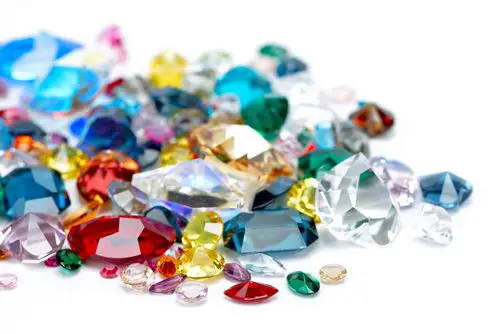Sauternes has 5 c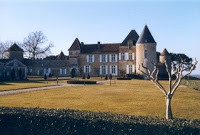 ommunes – Barsac, Sauternes, Bommes, Fargues and Preignac. All 5 can use the name Sauternes but Barsac also has its own appellation. Long before the great sweet wines of Sauternes were made the Romans grew their vines here.
ommunes – Barsac, Sauternes, Bommes, Fargues and Preignac. All 5 can use the name Sauternes but Barsac also has its own appellation. Long before the great sweet wines of Sauternes were made the Romans grew their vines here.
Preignac, (home of the Second Growth Chateau de Malle) takes its name from the Roman villa Praemiacum which once stood there. Praemiacum roughly translates as prized and this was the home of Bishop Leontius II (542-564), the last surviving descendant of Saint Paulinus. Paulinus by the way was taught by the poet Ausonius whose villa is located at Chateau Ausone in Saint Emilion.
Leontius is recorded as growing grapes at Preignac and established the church in the village dedicated to Saint Vincent, Patron Saint of Wine Makers.
Preignac once acted as the door to Sauternes as it had a prosperous harbour which exported the wines along the waterways. Inland from Preignac the commun e of Bommes has more than the liquid gold of Sauternes wines to claim as its riches.
e of Bommes has more than the liquid gold of Sauternes wines to claim as its riches.
Chateau Rayne Vigneau stands on a splendidly sited ridge and its vineyards lie on a unique mineral deposit washed down from the Pyrenees. These vines sit on precious stones – which caused somewhat of a stir in the 1930s. 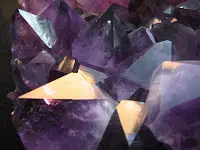
The stones are sapphires, chalcedony, agate, crystal, jasper, amethyst, onyx, carnelian and opals. The owner at the time, the Viscount De Roton has a mineral collection of over 10,000 pieces, a thousand of which have been carved and polished.
Fargues is home to the Chateau de Fargues, owned by the Lur Saluces family since 1472. In the 18th and 19th century the Lur Saluces family owned several properties in Sauternes and Barsac, such as Chateaux Coutet, Filhot, de Malle and especially d’Yquem.
The ancient stronghold of Chateau de Fargues has links with another prestigious chateau – it was built in 1306 by Cardinal Raymond Guilhem de Fargues, nephew of Bertrand de Goth (Pope Clement V), who ow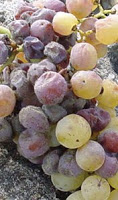 ned Chateau Pape Clement.
ned Chateau Pape Clement.
In 1855 the Emperor Napoleon III organised the Exposition Universelle de Paris to showcase the best of all that was France and requested a classification system for France’s best Bordeaux wines which were to be on display for visitors from around the world.
Brokers from the wine industry ranked the wines according to a château’s reputation and trading price. In their view, the market (which was mainly British) had already determined which Bordeaux wines were best, and the classifications needed to reflect the market’s judgement.
Sauternes was the only wine area outside the Médoc to be included – (apart from Chateau Haut Brion in Graves  at the time but since 1987 it has been known as the Pessac-Leognan appellation).
at the time but since 1987 it has been known as the Pessac-Leognan appellation).
Eleven châteaux were classified as Premier Cru, fifteen as Deuxième Cru, whereas to the top of the classification of Sauternes, was created a special denomination of Premier Grand Cru exclusively reserved to the famous Château d’Yquem: a unique case in all Bordeaux.
The appellation of Sauternes is an unusual place in that it lies in the hollow where the River Garonne and its tributary the Ciron converge. The source of the Ciron is a spring which has cooler waters than the Garonne.
In the autumn, when the climate is warm and dry, the different temperatures from the two rivers meet to produce mist that descends upon the vineyards from dusk till dawn.
The mist helps the development 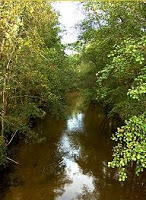 of the botrytis cinerea fungus (known as Noble Rot). Noble Rot makes the the grape concentrate the flavours and sugars whilst keeping a high level of acidity. By mid day, the warm sun will help dissipate the mist and dry the grapes to keep them from developing less favourable rot.
of the botrytis cinerea fungus (known as Noble Rot). Noble Rot makes the the grape concentrate the flavours and sugars whilst keeping a high level of acidity. By mid day, the warm sun will help dissipate the mist and dry the grapes to keep them from developing less favourable rot.
Being from the Graves region the terroir of Sauternes is gravel, clay and limestone but Barsac ( which is in the north west of Sauternes) has a red, sandy alluvial limestone base and its wines have a different character.
The grapes grown in Sauternes are those which make White Bordeaux – Sémillon, Sauvignon Blanc and Muscadelle. Unlike White Bordeaux Sémillon, makes 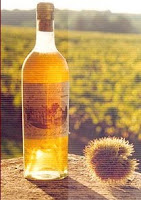 up most of the blend as it is easily infected with Noble Rot.
up most of the blend as it is easily infected with Noble Rot.
Sauvignon Blanc provides acidity to counter balance the sweetness and Muscadelle contributes fragrance. Sauternes is expensive due to the labour intensive methods of its production. Grapes have to be hand picked so that only those with Noble Rot are selected and yields can be low. It is said that one grape vine only makes enough juice to make one glass of wine!
Flavours can include apricots, peaches, dried pineapple, nuts and honey and the finish lasts on the palate for a long time. Their colour is gold which darkens with time to a deep copper. The wine should be served chilled at around 11ºC.
These dessert wines have an incredible ability to age and continue to develop for decades.
Sauternes has an air of magic about it but until I started looking into it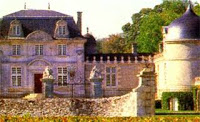 s history I had not realised that it also possesses an air of mystery.
s history I had not realised that it also possesses an air of mystery.
No one really seems to know when the luscious sweet wines of this misty terroir started to be made. There are lots of legends but no definitive answers.
One story tells of a Frenc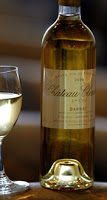 h nobleman who went bear-hunting in Russia. Before leaving his estate he ordered not to harvest grapes before his return.
h nobleman who went bear-hunting in Russia. Before leaving his estate he ordered not to harvest grapes before his return.
He was delayed until the November and his workers had to wait until he could order the harvest. The grapes had started to rot but the wine was made nevertheless – and thus Sauternes was born.
It is more likely that Sauternes had been made with the “noble rot” long before this but that knowledge of it had been suppressed. The reason being that the winemakers, some of which were priests, saw that the noble rot was undoubtedly useful but concealed the fact of using the mysterious fungus. In those times sweet wines were used at the sacramental ceremony of communion. To admit that these wines were made using rotten grapes was a blasphemy for most Catholics.
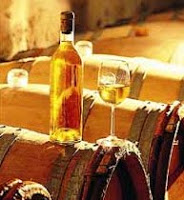 The consensus is that by the 18th century Sauternes was definitely being made with noble rot but Chateau de Malle says that the oldest evidence of sweet white wine produced at de Malle is from the vintage year 1666.
The consensus is that by the 18th century Sauternes was definitely being made with noble rot but Chateau de Malle says that the oldest evidence of sweet white wine produced at de Malle is from the vintage year 1666.
The Château de Malle story begins when Jacques de Malle built the castle in the early 1600′s. Early records suggest that the grapes were grown there are already in the 1400′s, but that the wine at this time was dry and white.
The date of 1666 corresponds with the time line of wines being produced with grapes affected by noble rot Botrytis Cinerea in 1650 in Hungary, in the Tokay area.
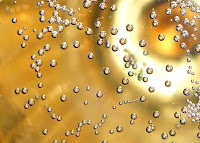 There is also a little known secret of Sauternes – there was an attempt back in the 1870s to make Sparkling Sauternes. Messrs. Normandin and Co called in the Champagne experts and several châteaux even won ribbons in 1877.
There is also a little known secret of Sauternes – there was an attempt back in the 1870s to make Sparkling Sauternes. Messrs. Normandin and Co called in the Champagne experts and several châteaux even won ribbons in 1877.
Encouraged, no doubt, by the success obtained by Messrs Normandin and Co with their Sparkling Sauternes, the house of Lermat Robert and Co of Bordeaux, introduced a Sparkling Barsac, samples of which were submitted to the jury at the Paris Exhibition of 1878.
Apparently the experiment was not a lasting success and the mysterious Sparkling wine has been wiped from the history books – which is probably for the best . . . as the sweet Bordeaux they produce nowadays is some of the most sought after around the globe.

